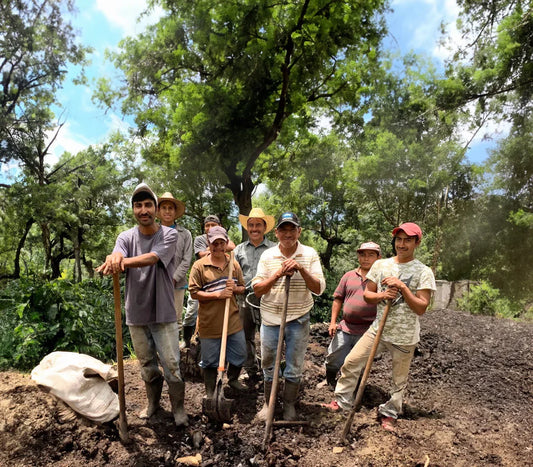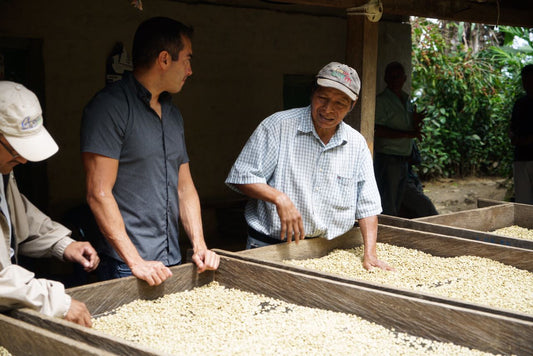
The Most Important Natural Link on Earth: Costa Rica's Biodiversity
Nestled in the middle of Central America, Costa Rica is a biodiverse paradise, home to half a million of the world’s species.
As a child, I remember visiting the many national parks in our country.
One that stands out most in my recollections is Tapantí. This park excited me because as soon as we arrived, we could feel the air changing: it felt purer. So did the water. Although freezing, we loved swimming in the park’s rivers and pools, and splashing under the waterfalls.
Today, I still get excited when we visit the park, since it is one of the places with the highest variety of microclimates in the country, thanks to its immense variety in terrain.
This abundance in biodiversity is one of the reasons why we Ticos, the people of Costa Rica, are so proud of our country and care so much about our natural environment. Nature’s greenery runs in our blood.
Costa Rica: A Biodiverse Bridge Across Two Continents
The history and development of our rich lands has also impacted the biodiversity of the US and, in turn, the world.
For millions of years, North and South America were separated by water. There was a gap between the continents through which the waters of the Atlantic and Pacific Oceans could flow freely. Naturally, this prevented species from interacting with one another. As many animals and plants had no way to cross the water, they could not migrate.
Today, many of these species, such as the North American horses and camels, can only be found in books.
However, approximately three million years ago (or 15 million, according to some scientists), volcanic activity in what is now Costa Rica created a bridge between the continents, through the consolidation of a new continental mass. This is how what we know today as the Cordillera de Talamanca was formed.
This new mountainous landscape rose out of the sea and caused erosion, which allowed material to consolidate and form a bridge of safe passage for all species between the North and South.

It is from this that the lands of Costa Rica emerged, forming a natural biological bridge that would change the story of biodiversity on our planet forever.
When this bridge was formed, it not only allowed plant and animal species to pass from one continent to the other, but also facilitated a cultural exchange through human migration that continues to this day.
All this change allowed for numerous species to spread to new territories. For instance, nowadays, oak and walnut trees are prevalent throughout most of the Americas, but these species were originally only found in the North. Likewise, the opossum, armadillo, and porcupine, which are present in North America today, all trace back to ancestors that came across the land bridge from South America.
Of course, these changes did not only affect the terrestrial world; a new natural marine barrier was also formed. This closed a passage for many species of marine animals and brought about a distinct change in the marine fauna and flora along the coast.
Since the Pacific and Atlantic oceans were separated, various species had to change their route and adapt to the new conditions. Especially as the mangrove forests, coastal ecosystems rich in biodiversity and a natural habitat for many species, are now only found on the Pacific coast.
Cultivating a Biodiverse Paradise
All these changes contributed to Costa Rica’s immense biodiversity. Today, we are one of the most biodiverse countries in the world. Even though we have just 0.03% of the world's land mass, we are home to approximately 6% of the planet's biodiversity.
Without a doubt, the change in our landscape adapted the course of global biodiversity. And it's something our country has fought for all these years, as we continually strive to be a green country; one that takes pride in and strives to preserve its natural heritage as much as possible.
We know that pollution and many other factors threaten our planet’s health today. It is for this reason that we protect at least 25% of our national territory and more than 40 biological corridors that run through it, from the cloud forests of Monteverde to the coastal mangroves of San Antonio.
“The concept of corridors is simple,” says one travel expert. “In the reserves and parks, they are areas of connectivity; places where species can move freely within a network of habitats. The goal of corridors is to provide a safe haven that promotes survival in an increasingly fragmented world.”
Costa Rica, where nature reigns supreme: a small country with boundless wonders, boasting two oceans, majestic mountains, and a remarkable volcanic ridge that shapes its landscape. This diverse terrain gives rise to a tapestry of climates and an astounding twelve ecosystems, fostering a haven for countless plant and animal species.
As we stand today, we take immense pride in being global leaders in preserving biodiversity and cherishing nature. The Ticos are at the forefront of this progressive movement. Through visionary policies and collaborative community efforts, we have crafted a blueprint that sets an example for the entire world.
Come and experience the magic of Costa Rica for yourself. Explore a country that may be small in size but possesses a colossal heart. Everywhere you turn, be prepared to encounter an unrivaled tapestry of vibrant fauna and flora. Let Costa Rica capture your heart and leave you spellbound.


